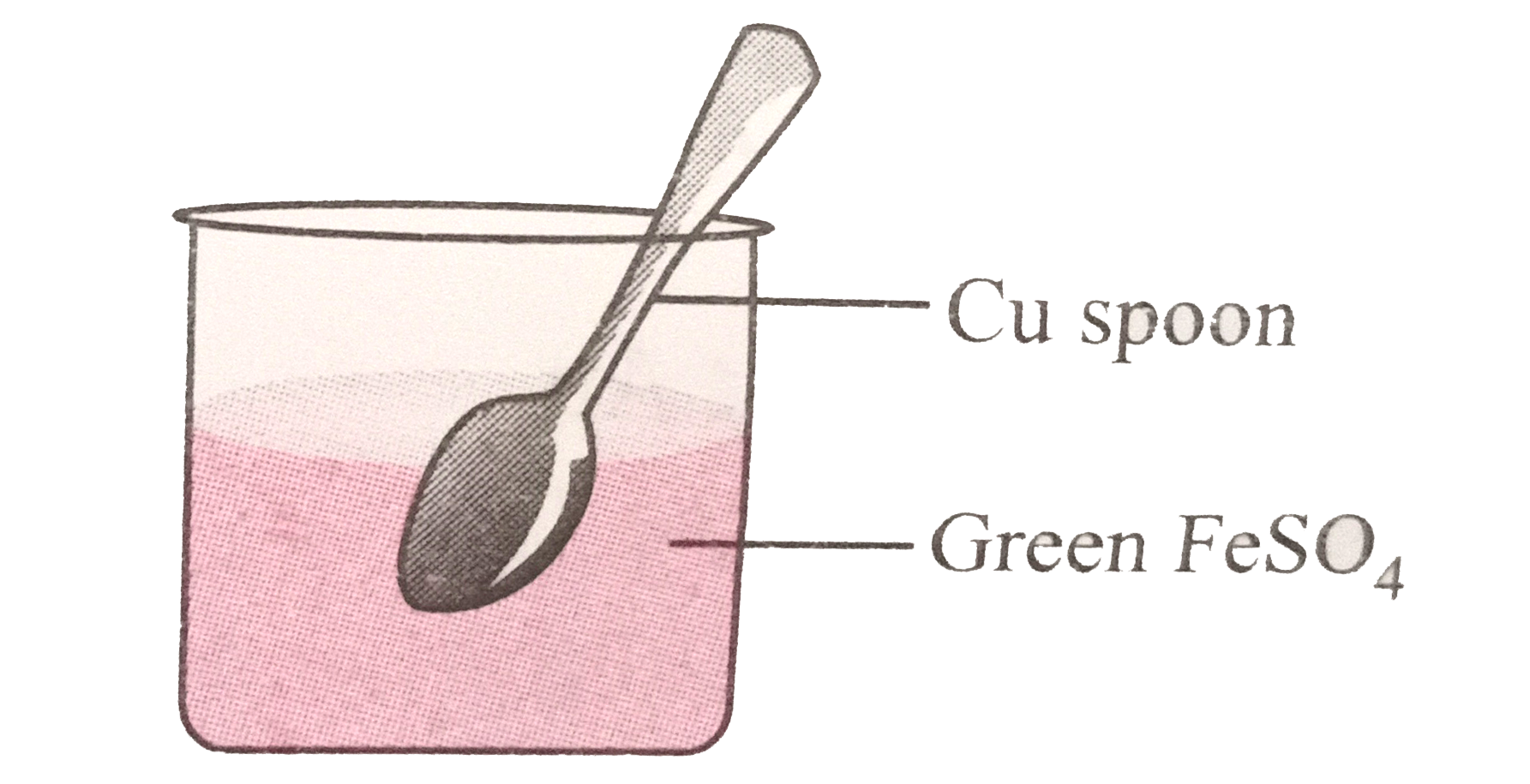If a spoon of copper metal is placed in a solution of FeSO4, what will be the correct observation ?

Copper is dissolved in FeSO4 to give brown deposit.
No reaction takes place.
Iron is deposited on copper spoon.
Both copper and iron are precipitated.
The correct Answer is:B
Since reduction potential of copper is higher than iron it does not get oxidised and no reaction takes place.
Topper's Solved these Questions
- REDOX REACTIONSBOOK - NCERT FINGERTIPSCHAPTER - REDOX REACTIONSEXERCISE - Higher Order Thinking Skills
9 Videos
- REDOX REACTIONSBOOK - NCERT FINGERTIPSCHAPTER - REDOX REACTIONSEXERCISE - NCERT Exemplar
11 Videos
- REDOX REACTIONSBOOK - NCERT FINGERTIPSCHAPTER - REDOX REACTIONSEXERCISE - MCQs (REDOX REACTIONS AND ELECTRODE PROCESSES)
1 Videos
- PRACTICE PAPER 3BOOK - NCERT FINGERTIPSCHAPTER - PRACTICE PAPER 3EXERCISE - Practice Paper 3
46 Videos
- SOME BASIC CONCEPTS OF CHEMISTRY BOOK - NCERT FINGERTIPSCHAPTER - SOME BASIC CONCEPTS OF CHEMISTRY EXERCISE - Assertion And Reason
10 Videos
Similar Questions
Can zinc displace iron from a solution of FeSO4 ?
View Solution(a). Arrange the following metals in order of their chemical reactivity, placing the most reactive metal first:
magnesium, copper, Iron, sodium, Zinc, Lead, Calcium.
(b). What happens when a rod fo zinc metal is dipped into a solution of copper sulphate? Give chemcial equation fo the reaction involved.
View Solution
Knowledge Check
If a spoon of copper metal is placed in a solution of ferrous sulphate:
ACu will precipitate outBiron will precipitateCCu and Fe will precipitateDno reaction will take placeWhen a cleaned strip of zinc metal is placed in a solution of CuSO4, a spontaneous reaction occurs, which of the following observation(s) is/are made?
AThe mass of zinc metal decreases graduallyBThe copper metal starts depositing on either zinc plate or settles donw in the vesselCThe solution remains electrically neutralDThe temperature of the solution decreases as it is an endothermic reaction.Certain metals have the capacity to displace some metals from their salt solutions. These reactions are known as metal displacement reactions. A metal placed higher in activity series can displace the metal occupying lower position from aqueous solution of its salt or a more reactive metal can displace less reactive metal from its salt solution.
Q. If a zinc rod is dipped in copper sulphate solution, following changes will be noticed. mark the correct observations.
(i) Zinc rod slowly loses its weight.
(ii) Copper settles at the bottom of the beaker.
(iii) Blue colour of copper sulphate disappears.A(i) and (ii) onlyB(i), (ii) and (iii) onlyC(i) and (iii) onlyD(iii) only
Copper sulphate dissolves in Nh4OH solution but FesO4 does not.
View SolutionA copper rod is placen in AgNO3 solution and FeSO4 solution. What changes do you obseve ? What type of reactions takes place ? Justify your observation.
View SolutionThe metal used to recover copper from a solution of CuSO4 is :
View SolutionFrom a solution of CuSO4 the metal used to recover copper is
View SolutionAssertion : If a piece of copper is placed in silver nitrate solution, the solution becomes blue.
Reason : Displacement reaction takes place and copper goes into the solution.
View Solution
